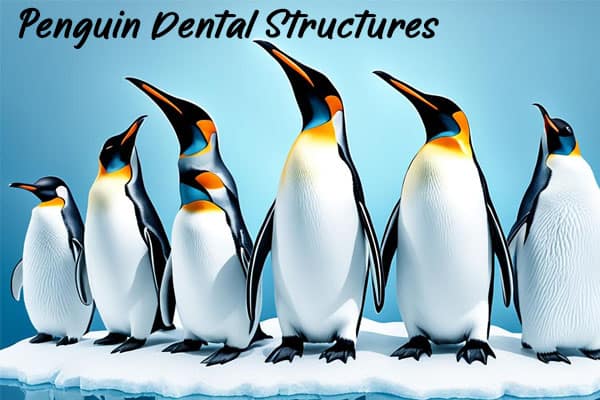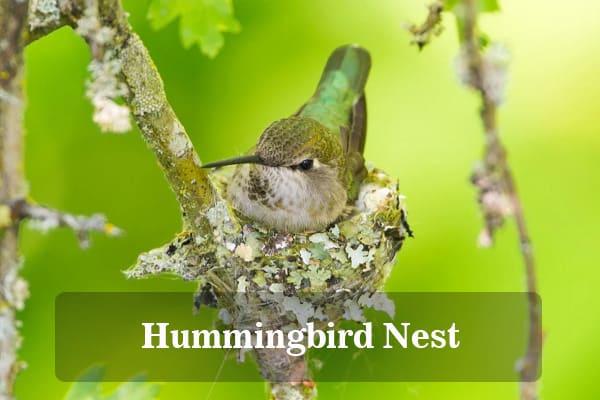Do Penguins Have Teeth? Discover the Truth!
Have you ever thought about whether penguins, those flightless birds from the Southern Hemisphere, have teeth like humans? Many think they might have a set of pearly whites, but that’s not the case. Let’s dive into the surprising world of penguin mouths and learn about their unique dental anatomy.
Penguins dive into the ocean like fish, but they are birds. And birds, including penguins, don’t have true teeth. They have something called denticles in their beaks instead. These tiny structures look like teeth but have different functions. Let’s see how these denticles help penguins catch and eat their slippery food, and explore the fascinating world of penguin dental anatomy.
Understanding the Penguin’s Mouth
Penguins are fascinating creatures with unique mouth structures. They are top predators in their aquatic homes. Their special features help them catch and eat their prey well.
The Penguin Beak
The penguin’s beak is a key tool for hunting and grooming. It’s sharp and strong, perfect for catching slippery fish and other sea creatures. This shape and strength are vital for the penguin’s survival, as they use it to catch, kill, and swallow prey whole.
What’s Inside?
Penguins don’t have true teeth, but their mouths are not empty. Inside, they have denticles, which look like tiny, backward-facing teeth. These penguin dental structures are key for catching and holding onto fish and other sea animals.

The penguin mouth anatomy is made for catching and eating fish and other sea animals. The penguin’s beak is sharp and hooked for catching slippery prey. The denticles in the mouth help keep the catch from escaping.
| Penguin Beak Features | Purpose |
|---|---|
| Sharp, hooked shape | Grasping and holding onto prey |
| Strong, powerful structure | Crushing and tearing food |
| Backward-facing denticles | Preventing prey from escaping |
Learning about the penguin’s mouth helps us appreciate these amazing birds more. We see how they’ve adapted to life in the water.
Fascinating World of Penguin Denticles
Penguins are amazing creatures, and their unique teeth, called denticles, are a big part of their biology. These spiny teeth are inside the penguin’s beak and can’t be seen unless the bird opens its mouth wide.
Fun Facts About Penguins’ Denticles
The way penguin denticles face backward is very useful. It helps them grab onto slippery fish and stop them from getting away. These teeth also help penguins swallow their food safely.
Penguin denticles show how well penguins have adapted to life in the water. These special teeth are just one way they’ve evolved to live in their cold homes and catch food.
Penguins don’t have regular teeth, but their denticles are key to their survival. They let penguins catch and eat their food well. Learning about penguin denticles helps us see how amazing these seabirds are.
| Penguin Denticle Traits | Description |
|---|---|
| Location | Inside the penguin’s beak, not connected to gums |
| Orientation | Backward-facing, to help hold onto slippery prey |
| Function | Assist in the swallowing process and prevent prey from escaping |
| Adaptation | Crucial for penguins’ aquatic lifestyle and hunting success |
Penguins’ amazing penguin denticles are part of their penguin dental structures that help them live in their unique penguin adaptations. These special features are key to their daily lives.
Penguin Beaks: Designed for Different Roles
Penguins are fascinating birds with unique beaks that show their amazing adaptations. These beaks vary in size and shape among species. They reflect the different ways each penguin finds food and lives in its environment.
The Emperor Penguin has a big, strong beak for catching large fish. On the other hand, the Fairy Penguin has a small, delicate beak for eating tiny fish and crustaceans near the shore.
These beak differences come from millions of years of evolution. Each penguin’s beak is made for its specific needs and the challenges it faces. By studying penguin beaks, we learn about their amazing ways of surviving in the sea.
“The beak of a bird is like a Swiss Army knife, designed for a variety of essential tasks.”
Let’s look at some key differences in penguin beaks:
| Penguin Species | Beak Adaptations | Feeding Strategies |
|---|---|---|
| Emperor Penguin | Large, strong, hooked beak | Capable of catching and holding large fish |
| Fairy Penguin | Smaller, more delicate beak | Adept at grabbing tiny fish and crustaceans near the shore |
| Gentoo Penguin | Broad, serrated beak | Specialized for catching and eating a wide variety of prey, including fish, krill, and small squid |
| Chinstrap Penguin | Smaller, more pointed beak | Adapted for feeding on smaller prey like krill and small fish |
Looking at the beaks of different penguins shows how they’ve evolved to live in their environments. From the Emperor Penguin’s powerful beak to the Fairy Penguin’s agile beak, each one shows the incredible adaptability of these birds.
Do Penguins Have Teeth?
When you think of penguins, their unique beaks and feeding habits might come to mind. But do these flightless birds have teeth? The answer might surprise you.
Penguins don’t have true teeth like humans or many other animals. Instead, they have denticles inside their beaks. These help them catch, grip, and swallow their food whole.
The denticles look like teeth but are not the same. They’re not anchored in the gums either. Penguins use these special structures to feed on marine life, like fish and krill.
Penguin’s Dental Anatomy
Penguins’ beaks are made for efficient feeding. The inside of their upper and lower mandibles has denticles. These are not teeth but horny projections that help them eat and swallow their food.
Denticles vary among penguin species, fitting their different diets and feeding styles. Some penguins have big denticles for fish, while others have small ones for krill.
Even without true teeth, penguins are top predators in the sea. Their beaks and denticles, along with their swimming skills, let them eat a wide variety of sea creatures.
“Penguins may not have teeth, but their beaks and denticles are perfectly adapted for their unique feeding habits.”
Penguins don’t have human-like teeth, but their beaks and denticles show how evolution works. These features help them live well in coastal and oceanic areas.
Penguin’s Eating Process Revealed
Penguins are amazing creatures that have evolved special ways to live in the sea. Their way of eating is one of the most interesting parts of their biology. They can get the nutrients they need without chewing their food.
How Do They Eat Without Chewing?
Penguins don’t have teeth like many other animals. They use their beaks and denticles to catch and eat their food. They eat fish, squid, and krill, which they swallow whole.
Their beaks have sharp edges and a hooked tip to grab slippery prey. The denticles inside help them hold onto their food. This lets penguins catch and swallow their food without chewing.
After catching prey, their strong stomach takes over. It can break down the whole prey, including bones. This special penguin digestion helps them get all the nutrients they need from their food.
The penguin feeding process shows how these birds have adapted to their environment. With their special beaks, denticles, and stomachs, penguins can get the nutrients they need to live well in the ocean. It’s a great example of nature’s wonders.

Penguins: Birds with Surprising Mouths
Penguins are amazing birds that have developed unique features to live in the water. They don’t have real teeth, but the denticles in their beaks are key to their survival. These spiny parts help them catch and swallow fish and other slippery prey. This shows how their special penguin dental structures let them be top predators in the sea.
Their beaks have small, backward-facing projections called denticles. These act as great tools for holding onto their food. The denticles’ sharp edges and surfaces help penguins catch fish, squid, and other sea creatures easily.
The denticles do more than just help with catching food. They also push the food back into the mouth, making swallowing easier. This is vital for penguins since they eat their prey whole, without chewing it first.
The denticles also aid in penguin biology and adaptations in other ways. They help keep penguins streamlined, which is key for swimming fast underwater. The denticles also make the beak strong and durable, helping penguins face the challenges of the sea.
Penguins’ unique mouths, with their special denticles, show how well they’ve adapted to life in the ocean. These features help them catch food and move through the water smoothly. The denticles are a big part of what makes penguins successful predators.
Check Our Previous Articles
| What is a Group of Turkeys Called? |
| Woodpeckers in Virginia |
| Hummingbirds in Ohio |
| Easter Egger Rooster Vs Hen: Key Differences |
| Two Birds on a Wire Meaning |
Frequently Asked Questions
Q1: Do penguin bites hurt?
Penguins have sharp beaks designed for catching fish, but their bites are not usually painful to humans as they don’t have strong jaws.
Q2: How do penguins eat with no teeth?
Penguins swallow their prey whole or break it into smaller pieces using spines on their tongues and rough patches in their mouths.
Q3: Why don’t penguins chew?
Penguins lack teeth for chewing; they rely on swallowing food whole or breaking it into smaller pieces before swallowing.
Q4: Do penguins cry?
Penguins can make loud vocalizations, but they don’t cry tears like humans do.
Q5: Is it OK to touch penguins?
It’s generally not recommended to touch wild penguins as it can cause them to stress and disrupt their natural behavior.
Q6: Can I hug a penguin?
No, hugging penguins is not advisable as it can be stressful for them. It’s best to admire them from a respectful distance in their natural habitat or at reputable facilities.
Conclusion
Penguins don’t have teeth like humans, but they have special features that help them live in the water. Their beaks have denticles that act like teeth, helping them catch and eat their food. This shows how penguins have evolved to survive in the ocean.
The penguin’s dental anatomy and their penguin feeding skills are truly amazing. They show us the incredible penguin biology and how they’ve adapted. It’s a reminder of nature’s wonders and evolution’s genius.
If you love penguins or just like learning about nature, this journey has been interesting and informative. Remember the amazing diversity and adaptability of penguins. They teach us a lot about the complex natural world.






